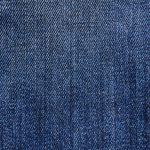When you gaze at a spool of thread, the numbers printed on the label may seem like a cryptic code. Understanding thread numbers is crucial for achieving mastery in sewing.
Deciphering these numbers unlocks a world of precision and finesse in your stitching. In this guide, you will unravel the secrets of thread numbers, from unraveling the significance of thread count to interpreting the variations in cotton, polyester, and silk thread numbers.
You'll also learn how thread numbers are related to fabric weight and how to select the right thread for diverse sewing projects.
Let's delve into the realm of thread numbers and elevate your sewing expertise.
Key Takeaways
- Higher thread counts may not always guarantee better quality.
- Understanding thread ply helps in selecting the right thread thickness.
- Thread weight and thickness determine the durability and versatility of polyester thread.
- Silk thread numbers should be matched to the fabric weight for a seamless finish.
Understanding Thread Count
When choosing bed linens, you may have come across the term 'thread count,' which refers to the number of threads woven into one square inch of fabric. Thread count is often considered a crucial factor in determining the quality and comfort of bed linens. Many believe that a higher thread count equates to better quality, but this isn't always the case.
The importance of thread count lies in the fact that it can indicate the density of the fabric and the smoothness of the sheets. However, there are myths surrounding thread count that need to be debunked. One common misconception is that a higher thread count always means better quality. In reality, a very high thread count can sometimes result in a stiffer fabric that may not be as comfortable.
Another myth is that thread count is the only factor to consider when choosing bed linens. While thread count is important, other factors such as the type of fabric and weave also play a crucial role in determining the overall quality and feel of the bed linens.
Understanding the importance and debunking the myths surrounding thread count can help you make more informed decisions when selecting bed linens.
Different Types of Thread Numbers
When it comes to understanding thread numbers, it's important to consider the significance of thread count, the concept of thread ply, and the variations in thread size.
These different types of thread numbers play a crucial role in determining the quality and characteristics of the fabric.
Thread Count Significance
You may frequently encounter different types of thread numbers when shopping for bedding, and understanding their significance can help you make informed decisions. Here's a breakdown of the significance of different thread numbers:
- Thread count comparison: Higher thread counts typically indicate softer and more luxurious sheets. However, be cautious of extremely high thread counts as they may not always guarantee better quality.
- Thread count durability: Sheets with a lower thread count often have a crisper feel and may be more durable than those with a higher thread count. This is because the lower thread count allows for more air to flow through the fabric, making it feel cooler and more breathable.
- Thread quality: The quality of the threads used is just as important as the thread count. Look for sheets made from long-staple cotton, as these tend to be softer, more durable, and less likely to pill.
- Weave type: The type of weave, such as percale or sateen, can also impact the feel and durability of the sheets.
Understanding Thread Ply
An essential factor to consider when evaluating thread numbers is the ply, which indicates the number of yarns twisted together to create a single thread. Thread ply variations play a crucial role in determining thread thicknesses.
Single-ply threads are made of a single yarn, making them finer and more delicate. They're often used for delicate fabrics and lightweight projects.
On the other hand, two-ply threads are created by twisting two yarns together, resulting in a thicker thread that offers more strength. This makes them suitable for heavier fabrics and projects that require durability.
Understanding the different ply variations allows you to select the right thread thickness for your specific sewing or crafting needs. Mastery of thread ply enables you to make informed decisions when choosing the most suitable thread for your projects.
Thread Size Variations
Continuing from the previous subtopic, an understanding of thread ply directly influences the comprehension of thread size variations and different types of thread numbers. When it comes to thread size, there are several variations to consider:
- Thread Weight: This refers to the thickness of the thread. The higher the weight number, the finer the thread.
- Tex Size: Tex size is the weight in grams of 1000 meters of thread. A higher tex size indicates a heavier thread.
- Denier: Denier measures the weight in grams of 9000 meters of thread. A higher denier number signifies a thicker thread.
- Ticket Number: This system is commonly used for cotton threads and refers to the number of hanks of 840 yards per pound. Higher ticket numbers represent finer threads.
Understanding these variations is essential for managing thread tension and ensuring needle compatibility.
Interpreting Cotton Thread Numbers
When it comes to interpreting cotton thread numbers, there are a few key points to consider.
Understanding the significance of thread count, differentiating between thread weights, and recognizing indicators of thread quality are essential for making informed decisions.
These factors play a crucial role in the performance and appearance of your sewing projects, so it's important to grasp their implications.
Thread Count Significance
Understanding the significance of thread count involves more than just counting threads; it requires interpreting the quality and feel of the fabric. When it comes to cotton thread numbers, it's essential to comprehend the significance of thread count in different fabrics and the benefits of higher thread count.
Here's what you need to know:
- Quality: Higher thread count often signifies a softer, smoother, and more luxurious fabric.
- Durability: Fabrics with higher thread counts tend to be more durable and less prone to pilling.
- Breathability: A higher thread count can result in a more breathable fabric, allowing for better airflow and a more comfortable night's sleep.
- Comparison: Comparing thread counts across different fabrics can help you understand the relative quality and feel of each material.
Understanding these aspects of thread count significance can help you make informed decisions when selecting fabrics.
Thread Weight Differences
Interpreting cotton thread numbers involves considering the weight of the threads, which impacts the fabric's texture and performance. Thread weight refers to the thickness of the thread and plays a crucial role in determining the final outcome of your sewing project.
The weight distribution of the thread can vary significantly, with finer threads being denoted by higher numbers and thicker threads by lower numbers. For instance, a 60-weight thread is finer than a 40-weight thread. Understanding thread weight differences allows you to make informed choices when selecting threads for different sewing techniques.
Thicker threads are ideal for decorative stitching and topstitching, providing more visible and pronounced results, while finer threads are suitable for delicate fabrics and creating subtle, refined seams.
Mastering thread weight interpretation empowers you to achieve the desired texture and durability in your fabric creations.
Thread Quality Indicators
To further understand the significance of thread numbers and make informed choices when selecting threads, you should also consider thread quality indicators.
Additionally, you'll need to distinguish between different thread qualities based on the cotton thread numbers.
When interpreting cotton thread numbers to assess thread quality, consider the following indicators:
- Thread Strength: Higher thread numbers often indicate stronger threads, capable of withstanding tension and stress during sewing.
- Thread Durability: Threads with higher numbers tend to be more durable, ensuring longevity and resistance to fraying or breakage.
- Consistency: Look for uniformity in thread thickness and texture, as this indicates higher quality and better performance.
- Smoothness: Threads with higher numbers often have a smoother texture, reducing friction and wear during stitching.
Understanding these quality indicators will enable you to make informed decisions when choosing cotton threads for your sewing projects.
Deciphering Polyester Thread Numbers
When selecting polyester thread, you should pay attention to the thread numbers on the label to determine the thread's weight and thickness. Polyester thread durability is often indicated by these numbers, which can vary based on the manufacturer and the intended use of the thread. The thread number, also known as ticket number or count, indicates the thread's weight and thickness. A higher thread number generally means a finer and thinner thread, while a lower number indicates a thicker, heavier thread. To better understand the variations in polyester thread numbers, refer to the table below:
| Thread Number | Description |
|---|---|
| 30 | Heavy-duty, thick thread |
| 50 | Medium weight, versatile thread |
| 70 | Lightweight, fine thread |
| 100 | Extra fine, delicate thread |
| 120 | Ultra-fine, for intricate work |
Understanding these variations will help you select the right polyester thread for your specific sewing or crafting needs. It's important to consider the thread number alongside the intended use to ensure the best results for your project.
Silk Thread Numbers Demystified
If you're wondering about silk thread numbers, they signify the weight and thickness of the thread, just like with polyester thread. Silk thread characteristics differ from other types of thread, and understanding the numbering system is crucial for choosing the right thread for your project.
Here's what you need to know about silk thread numbers:
- Denier Measurement: Silk thread numbers are often denoted by a 'D' followed by a number, representing the weight in grams of 9,000 meters of the thread. For example, a 20D silk thread means 9,000 meters of that thread weigh 20 grams.
- Thread Applications: Silk threads with lower numbers, such as 12D or 15D, are finer and suitable for delicate hand sewing, embroidery, and creating intricate designs. Meanwhile, higher numbered silk threads like 60D or 80D are thicker and more durable, making them ideal for upholstery, heavy-duty sewing, and decorative topstitching.
- Silk Thread Variations: Apart from denier, silk thread numbers may also be indicated by a weight number, such as 50wt or 100wt, which refers to the thickness and strength of the thread.
- Special Considerations: When working with silk threads, especially for high-end garments or delicate fabrics, it's essential to match the thread weight to the fabric weight for a seamless and professional finish.
Thread Numbers in Relation to Fabric Weight
Understanding how thread numbers relate to fabric weight is essential for achieving professional and seamless sewing results. When it comes to fabric density and thread strength, the relationship between thread numbers and fabric weight becomes crucial. Thread numbers, also known as thread count, indicate the number of threads woven into a square inch of fabric. A higher thread count generally signifies a finer and more tightly woven fabric, which is often associated with heavier weights. On the other hand, lower thread counts are typically found in lighter weight fabrics. The table below illustrates the relationship between thread numbers and fabric weight.
| Thread Number | Fabric Weight | Fabric Density |
|---|---|---|
| 100 | Light | Low |
| 200 | Medium | Moderate |
| 300 | Heavy | High |
| 400 | Very Heavy | Very High |
| 500 | Ultra Heavy | Extremely High |
Understanding the correlation between thread numbers and fabric weight enables you to make informed decisions when selecting the appropriate thread for your sewing projects. By choosing the right thread count in relation to your fabric weight, you can ensure the strength and durability of your seams, leading to high-quality and long-lasting garments.
Thread Numbers for Varied Sewing Projects
Selecting the appropriate thread count for your varied sewing projects is crucial for achieving optimal results and ensuring the longevity of your creations. Each sewing project requires careful consideration of thread tension and stitch length to achieve the best outcomes.
Here are some guidelines to help you choose the right thread count for different sewing projects:
- Thread Tension: Adjust the thread count based on the tension requirements of the project. For delicate fabrics, use a finer thread to avoid creating excessive tension, which could lead to puckering or distortion. Heavier fabrics, on the other hand, may require a thicker thread to maintain proper tension and prevent the stitches from pulling too tightly.
- Stitch Length: Consider the stitch length when selecting the thread count. For projects that require longer stitches, such as basting or gathering, a finer thread may not provide the necessary strength. Conversely, for topstitching or decorative stitches, a thicker thread can add visual interest and durability to the design.
- Fabric Compatibility: Match the thread count to the fabric type and weight. Lighter fabrics like chiffon or organza may benefit from a finer thread to avoid bulkiness, while denim or canvas would require a heavier thread for increased durability.
- Project Complexity: For intricate projects with multiple layers or seams, consider using a finer thread to reduce bulk in the seam allowance, whereas simpler projects may allow for experimenting with different thread weights.
Frequently Asked Questions
How Do Thread Numbers Relate to the Quality and Durability of the Fabric?
Thread numbers directly impact fabric strength and appearance. Higher thread density and thinner threads often indicate better quality and durability. Understanding industry regulations and project compatibility is crucial for selecting the right thread thickness for optimal results.
Can Different Thread Numbers Be Used Interchangeably for Sewing Projects, or Are They Specific to Certain Types of Fabric or Projects?
Different thread numbers can be used interchangeably for sewing projects, but it's crucial to consider fabric compatibility and sewing techniques. Thread quality directly impacts project outcomes, so selecting the right thread for each project is essential.
Are There Any Industry Standards or Guidelines for Thread Numbers, or Is It Completely Subjective?
Industry standards play a crucial role in thread numbers. While some aspects of thread numbers are subjective, guidelines exist for thread number comparison and fabric quality. Understanding these standards ensures optimal results for your sewing projects.
What Are Some Common Misconceptions About Thread Numbers, and How Can They Be Debunked?
Common myths about thread numbers include equating higher numbers with better fabric quality. Debunk this by understanding that thread count alone doesn't determine quality. Instead, focus on the type of thread for your sewing projects.
How Do Thread Numbers Affect the Overall Appearance and Finish of a Sewing Project?
When it comes to the overall appearance and finish of your sewing project, thread numbers play a crucial role. They affect thread tension, color selection, and stitch definition, ultimately influencing the professional look of your work.
- The Use of Nonwovens in Construction and Civil Engineering - July 11, 2025
- The Use of Nonwovens in Construction and Civil Engineering - July 11, 2025
- The Use of Nonwovens in Construction and Civil Engineering - July 11, 2025







